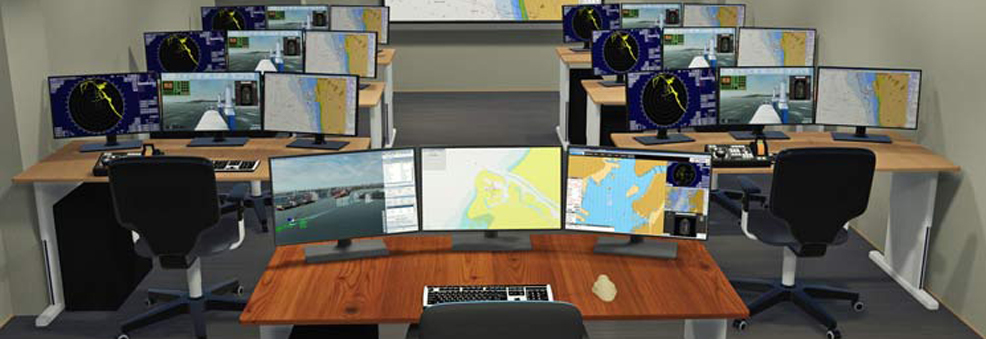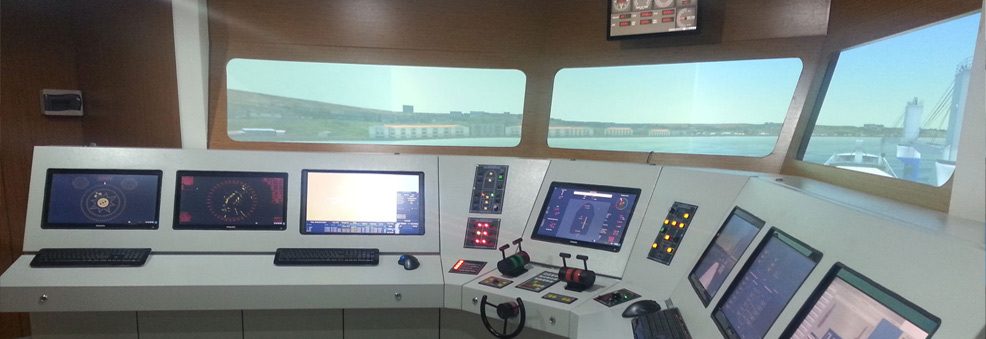General Features of ECDIS ARPA / RADAR Simulator
The image system will be capable of rotating the image 360o horizontally, changing the vertical view of the image up and down, and rotating the image from the virtual bow direction to the bridge swallows.
- The image system will provide twilight, night and day conditions in accordance with the training purposes.
- The image system will include wind-related sea conditions, clouds, fog, rain, night stars, tide level, bow stern striking buoy wakes, global world model and ground structure features.
- Special lights for buoy systems (IALA System A and System B), navigation lights and navigation auxiliary lights sectors and flashes will be interchangeable.
- The image system showing 1 horizontal image area on the bridge will be provided with LCD projection system. This system should be expandable up to 11 views (windows) if desired.
- The maneuvering and steering control consoles on the bridge will be equipped with the equipment required for navigational controls of a classic and modern ship. .

1+8 Student Ecdis Simulator Class
Ship maneuvering controls will include the following features;
On the computer screen;
Ship's direction indicator (Gyro Repeater)
Ship's speed, speedometer (Longitudinal Doppler Log,)
Turn rate indicator
Rudder sensor
Propeller RPM and RPM/Pitch adjustment
Air pressure start indicator
Wind direction and speed (Relative and true) indicator
Depth indicator GPS Fix (Latitude/Longitude) indicator
Interactive navigation lights and anchor control panel

ECDIS - ARPA/RADAR ekranı;
- ECDIS ARPA/RADAR screen will simulate real devices and meet IMO requirements. It will be a modern color scanner type on the bridge and will include navigation functions. ARPA RADAR console will comply with IMO rules (A-477, A-48, A-823) in terms of its functions.
- Radar will have features to be used in X/S bands, relative movement in heading or north direction, real movement and ARPA functions.
- ARPA RADAR Simulator will be able to show digital coastline creation with ship control navigation structures, SART signal, Racon, Shadow sector, Reflection effect, False echoes, Roll and side lobe effects, Multi-reflection echoes, Radar interference, Creation of effects on different pulse lengths and widths, effects created by different antenna rotation speeds, sea and rain effects.


Instructor screen;
- The trainer unit will have the flexibility to select and control the following events before and during the scenario application. These events are; Scene and image creation system (visibility, fog, sunlight) Environment (wind, current, sea, depth, shallowness etc.) Traffic (types of sailing ships, turning points, routes etc.) Radar echoes Ship features Navigation aids
- The database management system will have the ability to create new scenarios and organize data for a ready scenario.






